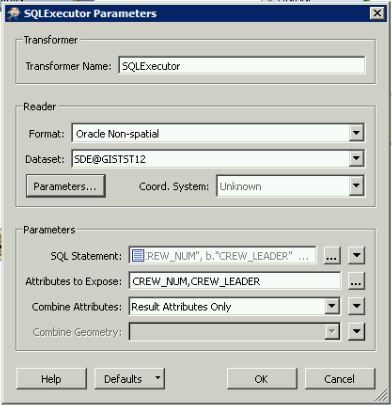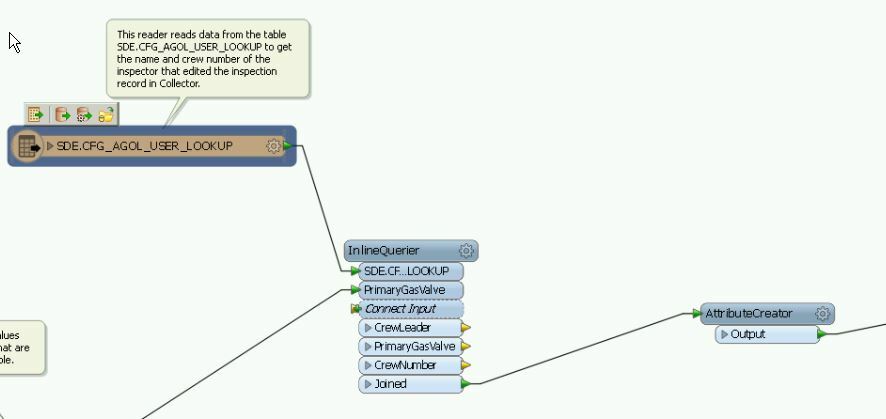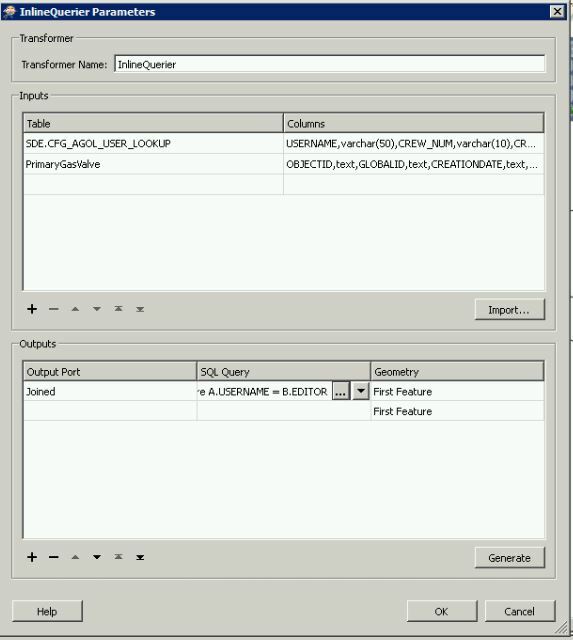So I have an Oracle table that has a Username field, Crew_Leader field, and a Crew_Number field.
In my process I am reading from a table that has a username value in a field called Editor.
I've been referring to this article: https://knowledge.safe.com/articles/19634/using-the-sqlexecutor-to-do-a-join.html
and decided to try to use the sqlexecutor transformer to run a query to join the Crew_Leader and Crew_Number fields to the table. However this seems to be very slow process as it tries to read over a thousand records. Do you know any other way I can accomplish getting the 2 fields from another table and then copying the values into fields in another table?
Thanks.







